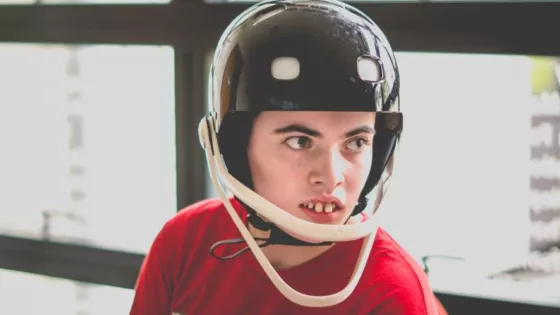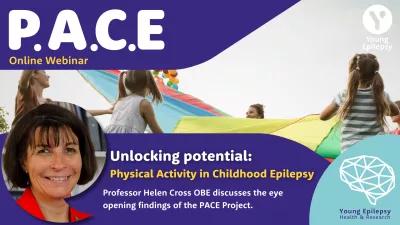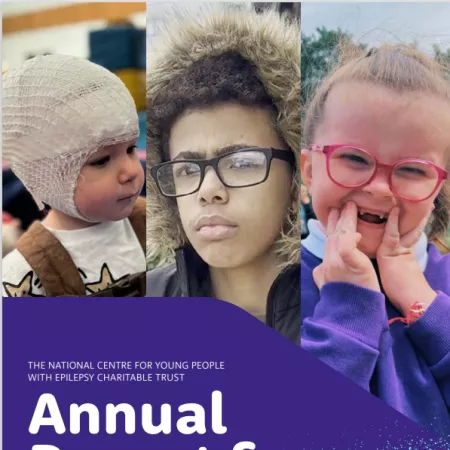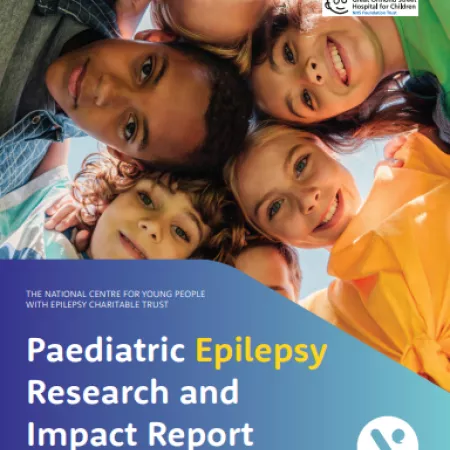Understanding Childhood Epilepsies
Around half of people diagnosed with epilepsy never learn the cause of it. But the sooner we know the cause of someone’s epilepsy, the sooner we know how else it is affecting them, and how best to manage and treat it.
Early epilepsy diagnosis is also better for the person’s understanding of their condition.

On this page
GENE-STEPS: Shortening Time of Evaluation in Paediatric epilepsy Services
This global research project is working to speed up genetic diagnosis for babies who develop epilepsy in their first year of life. By using rapid whole genome sequencing for both the child and their parents, the team aims to quickly identify any underlying genetic causes.
Researchers are also linking medical records with genetic data to create a virtual registry that connects information across leading children’s hospitals in the UK, US, Canada, and Australia.
The goal is to understand how early genetic diagnosis can improve treatment, development, and long-term health outcomes for children – and reduce the long, difficult journey many families currently face in getting answers.
You can read more about the latest developments in the GENE-STEPS project here.
Turning6 - Mapping patterns for earlier treatment in epilepsy
We are conducting a long-term follow-up of over 100 children aged 6-9 years old, who were first seen as babies with epilepsy as part of the EPIPEG study. Our aim is to better understand the causes of their epilepsy and the lasting impact on their physical and mental health, wellbeing, and education.
By mapping patterns in the development and presentation of epilepsy, we aim to identify early indicators that can lead to faster and more accurate diagnoses. For instance, if a specific pattern seen in a two-year-old reliably predicts a type of epilepsy typically diagnosed at age seven or eight, we can start appropriate treatment five to six years earlier. Early intervention like this could significantly reduce the long-term impact of epilepsy on a child’s health and quality of life.
Alongside this follow-up study, we are also comparing the sleep differences of the Turning6 group with a group of children without epilepsy, matched by age and gender. Whether sleep difficulties contribute to ongoing neurodevelopmental problems remains unclear and may differ across the epilepsies, therefore we hope to learn more about the impact of sleep difficulties in this group.
Our goal is to transform how we diagnose and treat epilepsy in young children, giving them the best possible chance at a healthy future.
An innovative OPM-MEG brain scanner for children and young people
OPM-MEG technology aims to transforms epilepsy diagnosis into a much gentler, less intrusive experience, allowing for more accurate data collection, earlier diagnosis and interventions, and better management, treatment and health outcomes.
Young Epilepsy has also developed a world leading clinical OPM-MEG suite for children. We aim to transform the experience of epilepsy diagnosis for children, young people and their families through this innovative diagnostic technology.
Optically pumped magnetoencephalography (OPM-MEG) is the result of a collaboration between:
- Young Epilepsy’s Research team
- University of Nottingham
- University College London's Institute of Neurology
- UCL Wellcome Centre for Human Neuroimaging
- Magnetic Shields Ltd
- Cerca Magnetics
Read more here about OPM-MEG
Acceptance and Commitment Therapy for Young People with Epilepsy and Caregivers
Acceptance and Commitment Therapy (ACT) is an evidence-based therapy which teaches practical tools and skills to manage difficult thoughts, feelings, and behaviours, and is designed to promote psychological flexibility and resilience.
Young Epilepsy have worked in partnership with young people from the Youth Voice Network, ACT therapists, and paediatric neuropsychologists to co-develop a tailored online ACT course for young people with epilepsy. We are also developing an online group intervention for parents/caregivers of young people with epilepsy.
These interventions have been co-produced with the patient groups and informed by clinical expertise to meet the specific needs of families affected by epilepsy. They aim to improve psychological flexibility, wellbeing, quality of life, and to reduce the impact of epilepsy-related stress on young people and their families.
Transition
Many children and young people with epilepsy (CYPE) face the reality of having epilepsy in adulthood, which means that at some point they will have to ‘transfer’ from paediatric to adult health services. The process of preparing these CYPE, and their families, for this transfer is known as ‘transition’. Transition care has been identified as one of the four priorities for the NHS’s bundle of care for CYPE, showing its importance as an area of research.
Anecdotally, we know that the transition process varies greatly from individual to individual, with differing levels of support out there depending on a CYPE’s healthcare provider. Part of improving the transition process for all CYPE and their families involves understanding this more empirically, which our research looks to do through three main aims:
- Conducting a scoping review of all UK research on epilepsy transition and evaluating the quality of publicly available transition resources. This will help us identify research gaps and how resources can be improved to better aid CYPE and their caregivers.
- Carrying out multiple focus groups with CYPE and their caregivers, hearing their perspectives on the transition process.
- Designing and disseminating a checklist about epilepsy transition to healthcare professions in order to hear their point of view.
Physical Activity in Children with Epilepsy (PACE) Prime
Physical activity plays a vital role in supporting physical, cognitive and emotional health. It improves bone, muscle and heart health, boosts cognitive and motor function, supports better sleep and enhances mental wellbeing. Yet, many children - particularly those living with disabilities or chronic health conditions - do not get engage in enough physical activity, putting them at greater risk of poor health outcomes.
Children with epilepsy may be especially vulnerable. Our earlier research found that only 10% of secondary school-aged children with epilepsy met the World Health Organization’s recommended levels of physical activity, significantly fewer than their peers without epilepsy. However, we still don’t know enough about the activity levels of younger children with epilepsy, which is crucial for understanding how physical activity patterns develop over time and how to tailor support from an early age.
This new study aims to fill that gap by focusing on primary school-aged children.
What the study will do:
- Track and compare physical activity, sedentary behaviour and sleep in primary-aged children with and without epilepsy using wearable activity monitors (accelerometers) and surveys.
- Identify key factors such as behaviour, mental health and motor difficulties that may influence activity levels in children with epilepsy.
- Explore the views of children with epilepsy and their parents about the barriers and facilitators to being physically active.
This will be the first UK study to provide data on how physically active younger children with epilepsy are, how much time they spend being sedentary or sleeping and what influences those behaviours. The insights we gain will be used to shape future interventions and help more children with epilepsy stay active.







